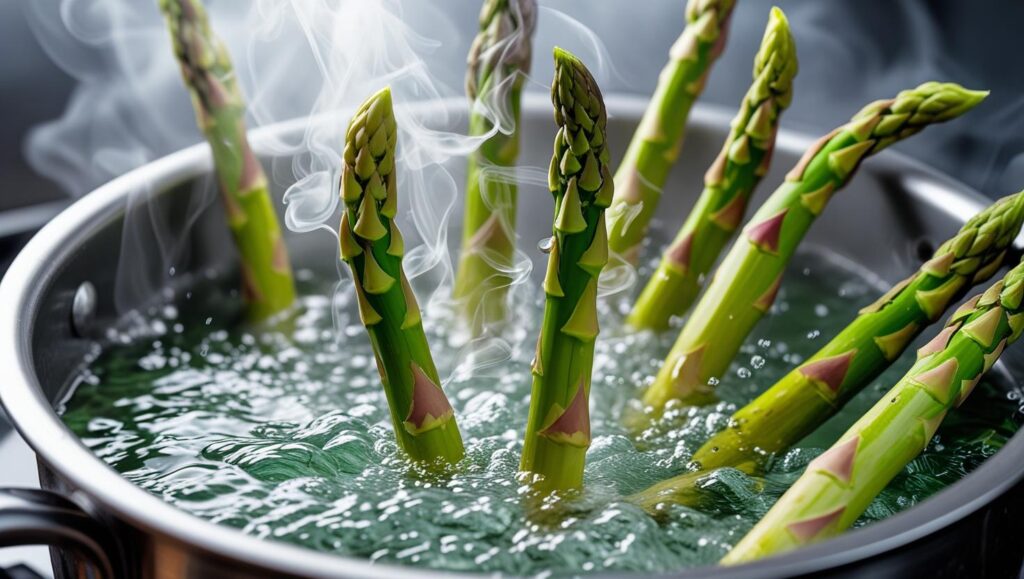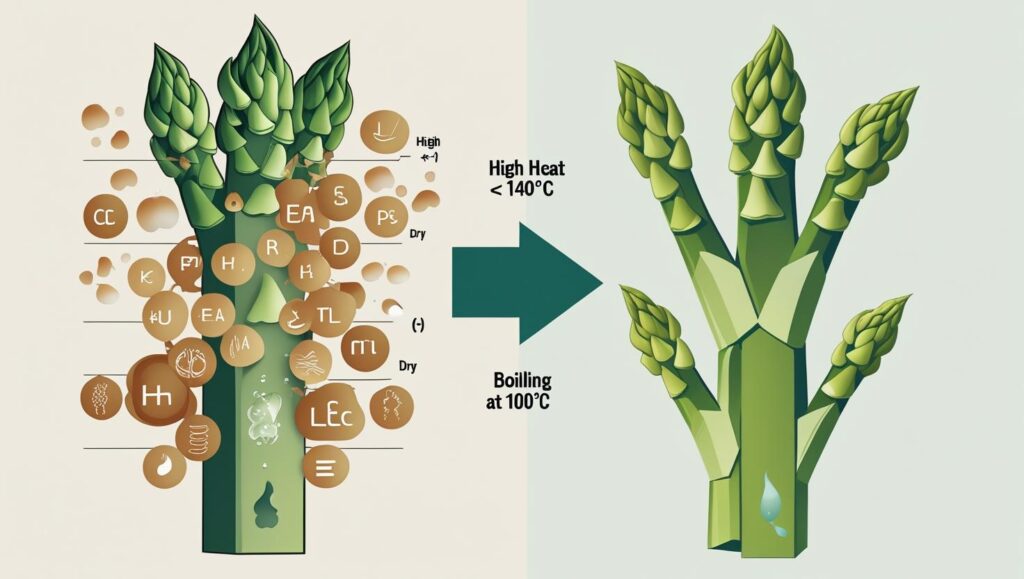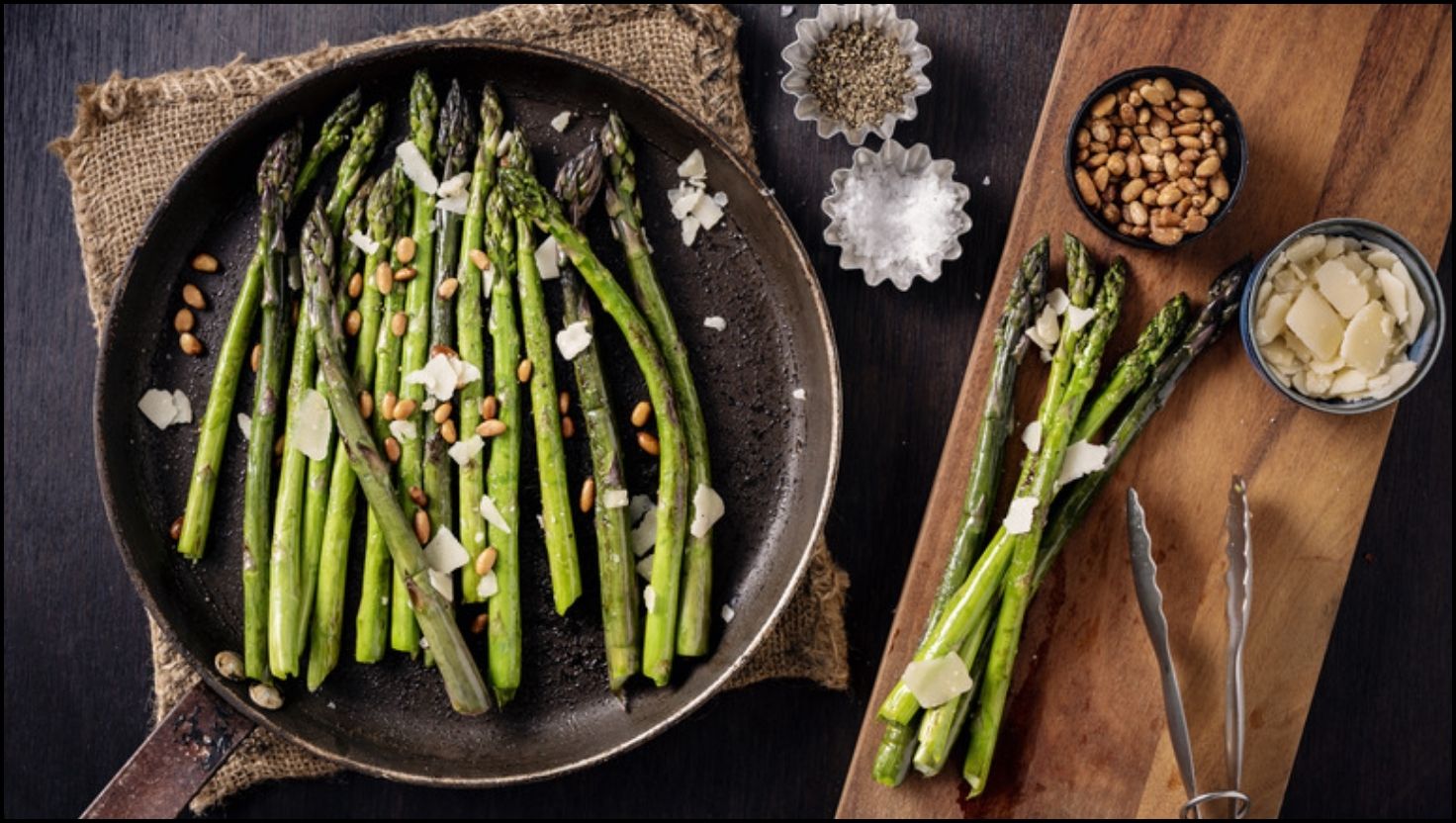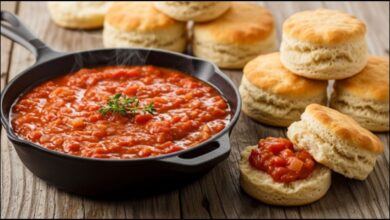For years, home cooks and chefs have debated the best way to prepare asparagus, often grappling with its characteristic bitterness. Now, a convergence of food science research reveals a specific, science-backed tip that not only mitigates this bitterness but also enhances the vegetable’s desirable flavors. The key lies in understanding the chemistry of the spear itself and employing a two-step cooking process that first removes unwanted compounds and then builds a richer taste profile.
At the heart of the issue are naturally occurring chemical compounds called steroidal saponins. A pivotal study published in the Journal of Agricultural and Food Chemistry by researchers Corinna Dawid and Thomas Hofmann from the Technical University of Munich identified these saponins, particularly a compound named protodioscin, as the primary culprits behind the bitter taste in Asparagus officinalis. While these compounds serve protective functions for the growing plant, they can be unpalatable to the human palate.
The science-backed solution is surprisingly simple: a quick blanch before the final high-heat cooking. This method leverages the chemical properties of these bitter compounds. By briefly submerging asparagus in boiling, salted water and then rapidly cooling it in an ice bath, cooks can effectively reduce the saponin concentration, paving the way for a sweeter, more nuanced flavor.
The Science of Better Asparagus: Key Principles
| Key Principle | Scientific Explanation | Source / Context |
| Isolate the Bitterness | Specific steroidal saponins, like protodioscin, are the main source of bitterness in asparagus spears. | Journal of Agricultural and Food Chemistry |
| Leverage Solubility | These bitter saponins are water-soluble. Blanching leaches a portion of these compounds out of the spear and into the surrounding water. | Principle of solubility; Research on blanching effects. |
| Build Flavor with Heat | High-heat cooking (roasting, grilling) after blanching triggers the Maillard reaction, creating hundreds of new, complex flavor compounds. | Modernist Cuisine; Principles of Food Chemistry |
Breaking Down the Bitterness
The bitterness in asparagus is not a flaw but a feature of its natural biology. “Saponins are widespread in the plant kingdom and often have a characteristic bitter or soap-like taste,” explains Dr. Anya Sharma, a food chemist and independent consultant. “In asparagus, these compounds are concentrated, and their levels can vary based on the age and variety of the plant.”

The research by Dawid and Hofmann was crucial in moving from anecdotal evidence to chemical certainty. Their team used a method called taste dilution analysis to pinpoint the exact molecules responsible for the off-putting flavor. By isolating compounds and having sensory panelists taste them, they determined that protodioscin was a key bitter agent with a very low taste threshold, meaning even minute amounts are perceptible.
Blanching works because these saponins are soluble in hot water. “Think of it like making tea,” Sharma clarifies. “You use hot water to pull the flavorful compounds out of the tea leaves. With blanching, you’re using hot water to pull a portion of the unwanted bitter compounds out of the asparagus.” A study on a related species, Asparagus racemosus, published in the Journal of Food Science and Technology, found that blanching at 80°C (176°F) for 15 minutes completely removed its bitter aftertaste. While cooking times differ for the common asparagus spear, the principle remains effective.
The Maillard Reaction: Building Superior Flavor
Simply boiling or steaming asparagus, while reducing some bitterness, does not build exceptional flavor. This is where the second step of the process—high-heat cooking—becomes essential. Methods like roasting, grilling, or pan-searing at temperatures above 140°C (280°F) initiate a powerful set of chemical reactions known as the Maillard reaction.

The Maillard reaction, first described by French chemist Louis-Camille Maillard in 1912, is not simple browning or caramelization. It is a complex cascade of reactions between amino acids and reducing sugars. “It’s the ‘flavor reaction’,” states a report from the culinary research group Modernist Cuisine. “The molecules it produces provide the potent aromas responsible for the characteristic smells of roasting, baking, and frying.”
When asparagus is roasted or grilled, the high, dry heat causes its surface to dehydrate, allowing the temperature to climb past the boiling point of water. This environment is perfect for the Maillard reaction to occur, creating the nutty, savory, and deeply complex notes that are the hallmark of perfectly cooked asparagus. Steaming or boiling, by contrast, limits the temperature to 100°C (212°F), preventing this flavor-building reaction from ever starting.
Expert Advice on a Time-Tested Vegetable
The concept of managing asparagus’s texture and taste through careful cooking is not new, though the chemical understanding is. Renowned food scientist Harold McGee, in his “Curious Cook” column, has long written about the challenges of asparagus, particularly how quickly it toughens after harvest as its sugars are converted into fibrous material.
“Most of this loss of sweetness and toughening happens in the first day after harvest,” McGee wrote for The New York Times. “A delay of just four hours between harvest and chilling causes the spears to toughen significantly.” This underscores the importance of starting with the freshest possible produce.
By combining this foundational knowledge with modern chemical insights, the two-step blanch-then-roast method emerges as the most effective strategy. It directly addresses the vegetable’s primary chemical drawback—bitter saponins—before leveraging a powerful chemical reaction to build a superior flavor profile that one-step methods cannot replicate.
For cooks around the world, this means the path to consistently delicious asparagus is clearer than ever. It’s a technique grounded not in kitchen lore, but in the fundamental principles of food chemistry.
Read More
Delicious Smoked Almond and Goat Cheese Salad: Your New Go-To Recipe!


 How Quick Air Fryer Meals Are Reshaping the American Kitchen
How Quick Air Fryer Meals Are Reshaping the American Kitchen A Depression-Era Staple, Southern Tomato Gravy, Finds New Life in Modern Kitchens
A Depression-Era Staple, Southern Tomato Gravy, Finds New Life in Modern Kitchens Why a Forgotten 1950s Cake with a Secret Ingredient Is Trending Again
Why a Forgotten 1950s Cake with a Secret Ingredient Is Trending Again More Than a Dessert: How Tar Heel Pie Captures the Essence of North Carolina
More Than a Dessert: How Tar Heel Pie Captures the Essence of North Carolina